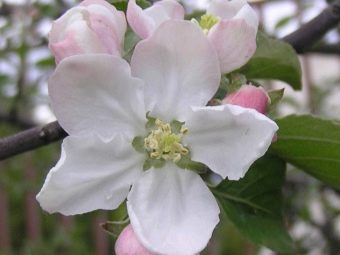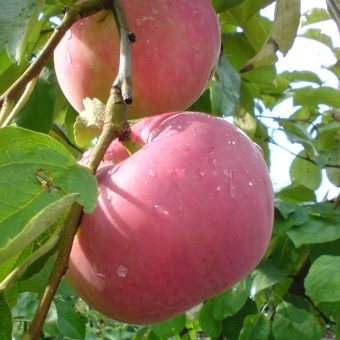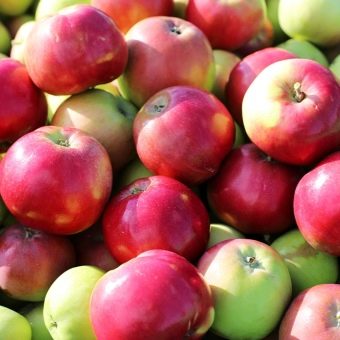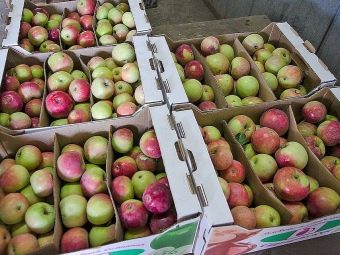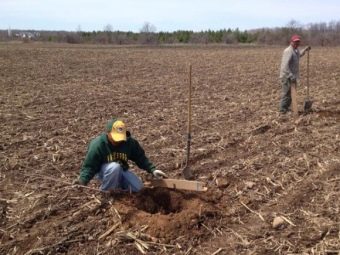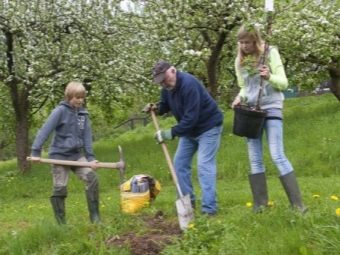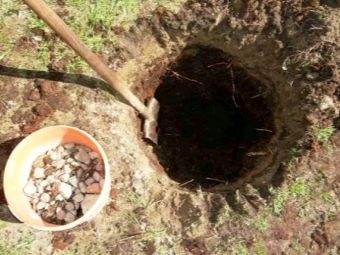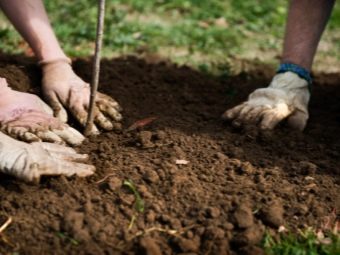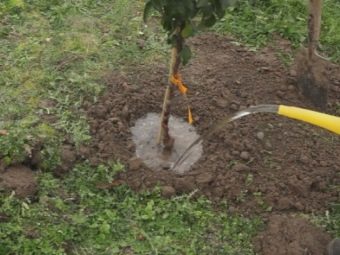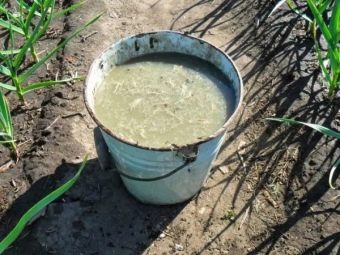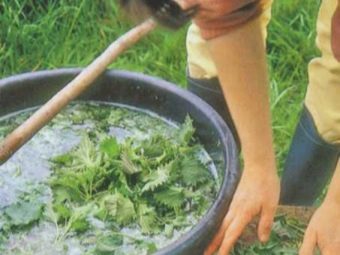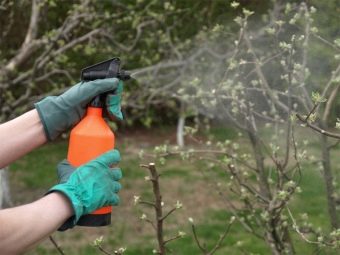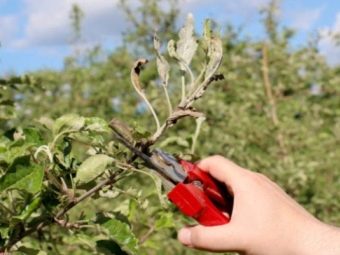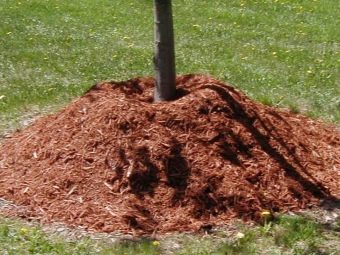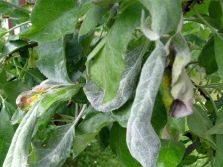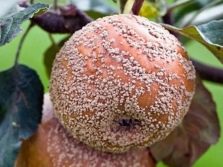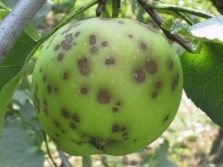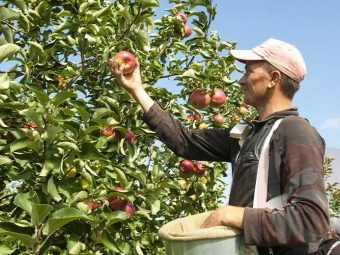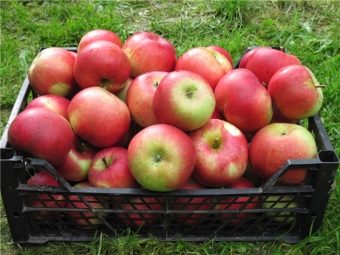Apple tree "Erlie Geneva"
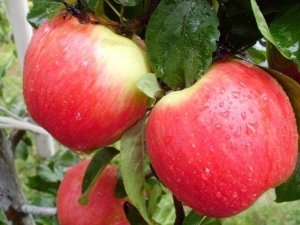
Apples of the “Geneva Earley” variety belong to early summer plants, the fruits of which ripen in mid-July. The apple tree was selected in the United States half a century ago at the Genevieve Experiment Station, which gave the name to the variety.It is based on two types of apple trees: "Quinti" and "Julered."
Description and characteristics of the variety
Apple Early Geneva - a tall plant about five meters tall, with a sprawling oval and moderately dense crown. Leaves oblong, dark green color. Blooms in early spring. Inflorescences are white, rounded, with slightly concave petals.
Beating her average speed. Airlie Geneva needs pollinators. Next to it should be planted other varieties of apple trees. But the tree itself is an excellent pollinator for other species.
The variety is able to give the first harvest in the second year of life.
From an adult tree, up to 50 kilograms of apples are harvested.
Fruits grow medium size (150-180 g). Beautiful oblong, widened down apples have a yellow or green color with red patches. Ripening with plenty of sun, they can gain red pigment.
The fruit has a cream-colored flesh with a good sweet-and-sour taste and a characteristic aroma. Maturation occurs within a month - from mid-July to mid-August. As a result of non-simultaneous collection for the month, you can collect several harvests.
Each fruit contains malic, citric and other types of acids, sugars, pectin, tannins, essential oil. Apples have a high content of vitamin C, A, group B and trace elements: magnesium, iron, potassium and others.
Virtues
Analyzing gardeners reviews, The following virtues can be noted:
- excellent balanced taste, original flavor;
- high gradual productivity, fruits can be collected in several stages;
- early maturation;
- the plant is resistant to powdery mildew and bacterial burn;
- excellent chemical composition and dietary quality of apples;
- fruits are well transported;
- stable annual yield and early fruiting of seedlings (the second year after planting).
The disadvantages include the short shelf life of the fruit, the need for external pollinators, and weak immunity to scab (the tree must be treated with fungicides).
Planting seedlings
The apple tree "Early Geneva" can not be attributed to the frost-resistant plants, the temperature of -20 degrees is critical for it. Therefore, apple trees are planted in the southern regions and in central Russia.
Apple trees can grow in shaded conditions, on damaged soils, but this will affect their fruiting. For large, juicy fruits and high yields, trees should be planted in well-lit areas. They do not like lowlands with cold stagnant air. Such conditions will affect the activity of flowering plants.
Apple trees are large spreading trees, so when planting, their future dimensions should be considered. Pollinators must also be remembered, so other varieties of trees need to be planted nearby.
Trees prefer nutritious soil with moderate humidity. Sour soil should be fertilized with wood ash (200 g per square meter).
"Erly Geneva" does not like the cold, so early planted plants can freeze.
In the spring they should be planted at the beginning of May, and in the fall - long before frosts.
Before planting it is necessary to examine the seedlings. Good quality planting material is accepted, without damaged branches and damaged root system. The root should be cut by one third, allowing it to harden further.
Before planting a sapling, it is necessary to prepare the ground for it, dig it up, remove the weeds. Next, you need to dig a hole 20 cm longer than the length of the root. For aeration, a dug hole should be left for several days to absorb moisture and saturate with air. At the bottom of the pit should lay pebbles as drainage, pour a little earth. To the remaining soil (which was removed from the pit), add fertilizer: humus, wood ash, phosphates. Insert the seedling into the pit, gently straighten the root and cover it with fertilizer. The vaccination site must remain on the ground.The soil of the tree should be tamped and watered well, gradually pouring in two or three buckets of water.
The land around the seedling must be mulched with sawdust or dry grass to trap moisture and protect it from weeds. Moisture also helps keep the bulk roller around the tree.
Care
No matter how unpretentious the plant, it can not just plant and forget. He will have to work throughout the season: watering, feeding, pest control, pruning, and in some regions wrapping up in preparation for winter.
Young seedlings need watering almost every day until they get stronger. Grown up trees are watered every ten days, adults have enough moisture when irrigating 7-12 times per season, it all depends on weather conditions. With close adherence of groundwater trees do not need frequent watering.
To grow a healthy plant and protect it from disease, it needs additional feed.
In the spring, before budding, they start digging a garden. At this time, the first feeding is brought under the root of the tree. This can be humus or nitroammofosk (35 g per tree). You can feed it with urea (half a kilogram of fertilizer to dig under the apple tree).
The second fertilizing do already flowering plants. After watering in calm weather make a liquid fertilizer. Suitable superphosphate (100 g), urea (300 g), manure or chicken manure, diluted in half a bucket of water. Litter should be diluted moderately, as its high concentration harms the plant.
At the end of spring, you need to feed the apple trees again for active fruit loading. It is necessary to prepare a herbal infusion in advance: fold freshly gathered grass into a container, cover with water, cover with foil and place in the sun. After 20 days, the infusion will be ready. You can feed trees with a mixture of sodium humate - 10 g, and nitrophoska - 50 g, to a large bucket of water.
In June, the root zone is fed with urea. It is better to do this in wet land in rainy weather. The concentration of fertilizer is indicated on the package, but the younger the tree, the less concentrated should be top dressing. Urea is also useful for pest control.
In the hot July month, fertilizing is done by spraying the crown of the tree with a solution of fertilizers, watering the foliage abundantly in the evening. Every two weeks you should alternate the nitrogen and mineral supplements.
Preparing apples for winter, you can feed them one last time with fertilizers and do pruning. This work is done in early spring or late autumn, when sap flow of plants slows down. In the spring clean dry, damaged, frostbitten branches. Autumn form a beautiful crown.
To ensure that the roots of the plant intake of air and moisture, after watering, carefully loosen the soil. Need to regularly remove weeds. When mulching, you should add leaves or cut grass under the trunk of the tree, which will help retain moisture.
Diseases and pests
Apple trees have their diseases, and the Erly Geneva variety is also susceptible to them. In order for the tree to be healthy and the fruits to enjoy a good taste, it is necessary to inspect the plant in time to recognize diseases and pests.
In some cases, conduct preventive work.
- Mealy dew. You can use a one-percent solution of Bordeaux mixture or prepare a solution of ferrous sulfate: dilute 50 g of powder and 30 g of green soap in a large bucket.
- Monilioz. It is necessary to collect the cist, well dig up the root part of the soil.
- Black cancer - disease of old trees. It is necessary deeply, with a piece of healthy wood, cut off the affected areas and seal them with wax.
- Scab. In this disease, the fruits become covered with dark spots and cracks, leaves fall. Immediately spray the wood with urea.
- Tree burns cut and cover up the place cut with a mixture of clay with manure.
- Cytosporosis. The trunk and branches of the tree strike ulcers. It is necessary to treat apple trees in time, since the neglected form of the disease leads to the death of the plant.First of all, it is necessary to cut off all the affected areas, to treat the crown with Vitaros.
- Tutoviki. It is necessary to clear the parasitic growths, process the sections with copper sulphate and cover with liquid clay or paraffin.
- Lichen need to cut and process a three-percent solution of vitriol.
- Milky shine. The bark of the tree is affected by dark spots. Need spraying and whitewashing plants.
In addition to diseases, apple trees are overwhelmed with pests: leafworm, moth, bark beetle larvae, apple moth and others.
With pests fight, treating plants with fungicides, urea. Other actions are also needed: pruning, cleaning the trunk, cleaning weeds and leaves.
Autumn spraying of trees helps to get rid of pests (insects, fungi) that have accumulated over the summer.
Harvesting and Storage
The apple tree produces a stable harvest every year. With proper care, you can get up to 50 kg of juicy fragrant fruits from a single tree. "Early Geneva" refers to the early varieties, which means that its fruits are not suitable for long-term storage. The harvest should be eaten within two weeks or processed into tasty and healthy juices, compotes, jams, jam.
This variety of apple trees brings several harvests per season, which makes it possible to enjoy fresh tasty fruits for a month and a half.
Description and characteristics of the "Erly Geneva" variety in the next video.


